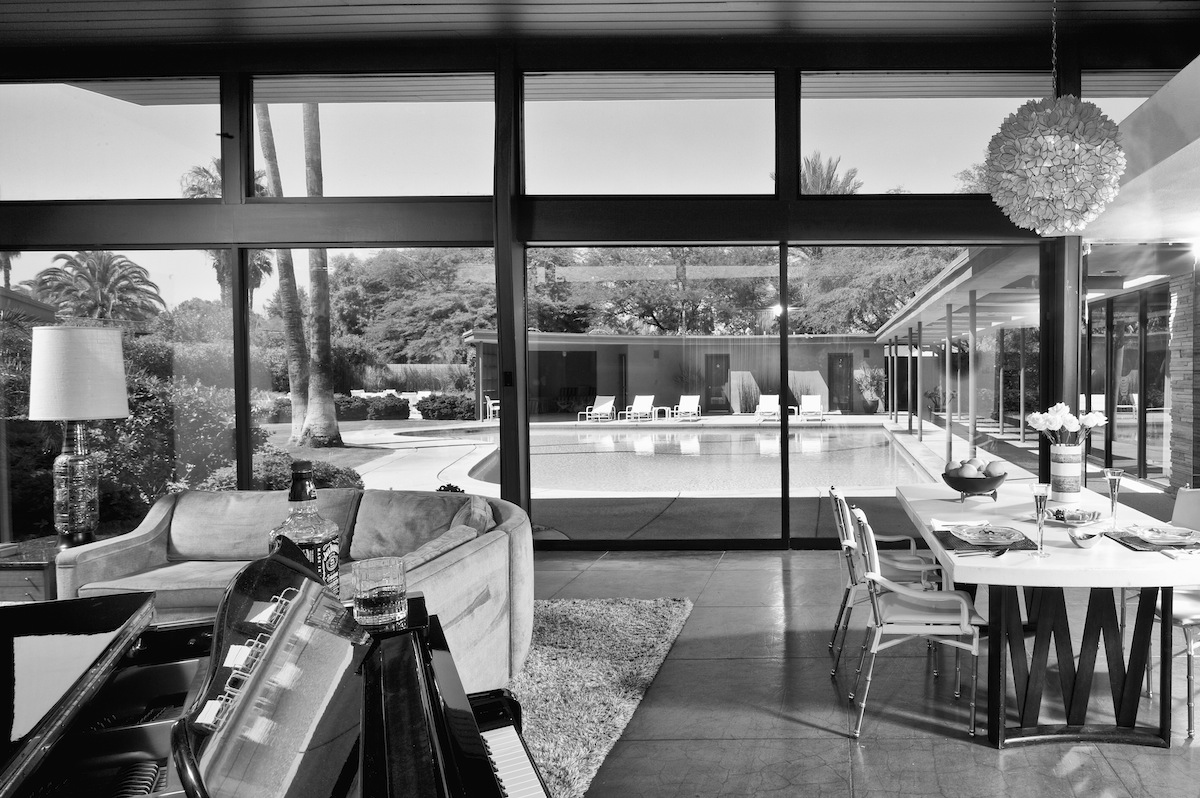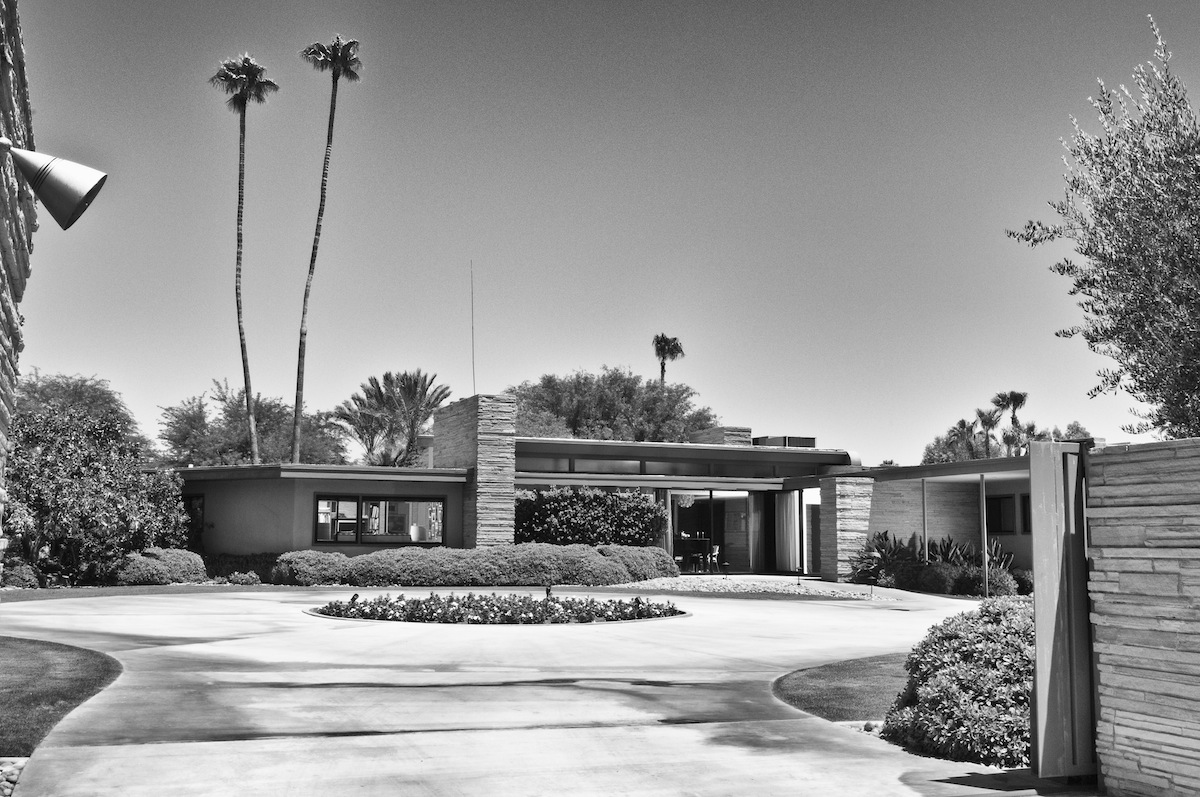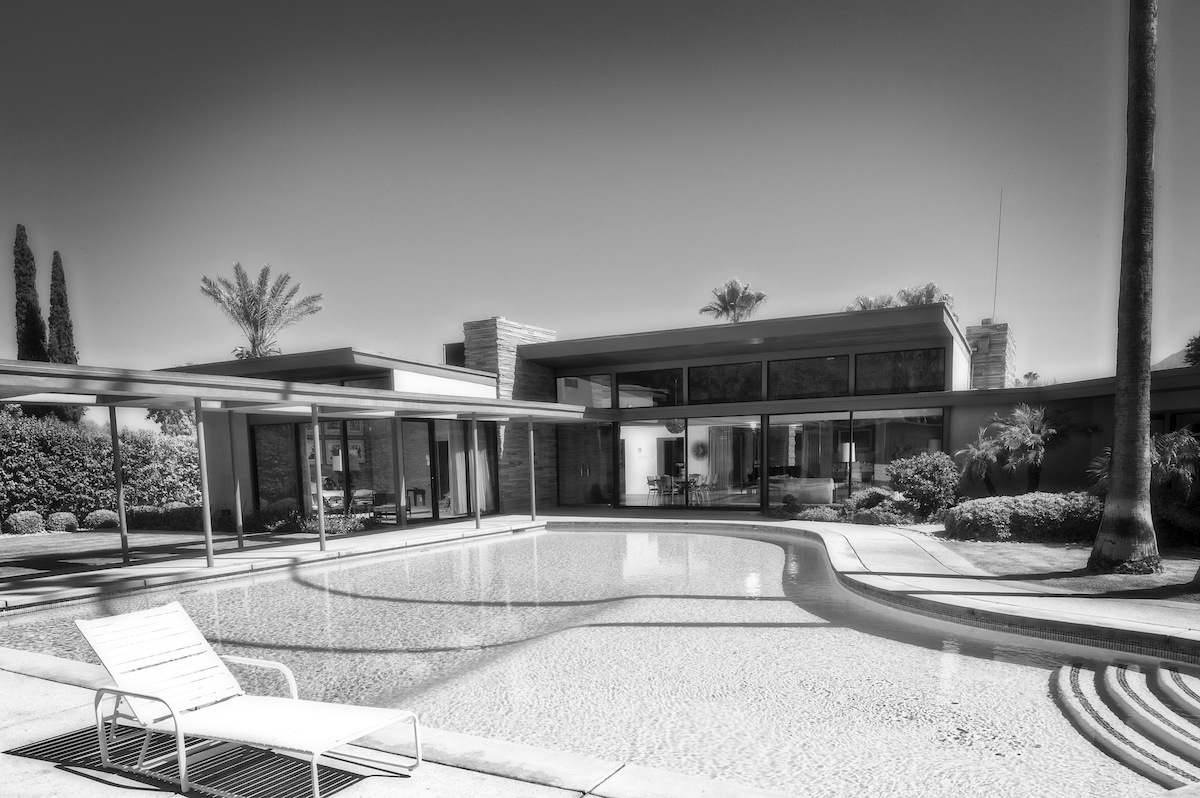History
When Frank Sinatra arrived in Palm Springs in the 1940’s, he brought allure and sex appeal to the formerly sleepy town. Soon after, Palm Springs became the ultimate destination for jet setters and Hollywood royalty.
Sinatra put Palm Springs on the map, and his presence can still be felt fifty years later as many come to visit Ol’ Blue Eyes’ haunts and to unwind in the desert, Sinatra style. He first came to Palm Springs in search of a weekend home for his family after signing a lucrative movie contract with MGM. As architect E. Stewart Williams recalls, it all started during the summer of 1947 when “Frank came in with a white sailor hat and an ice cream cone and said ‘I want that house’.” For Williams, it was his first residential commission.
Sinatra initially requested designs for a Georgian-style mansion, complete with a brick facade and column. He had just made his first million and wanted to celebrate in grand style.
However, with renderings of a house composed of long horizontal tines and non-traditional building materials, Williams was able to lure Sinatra away from the idea of a Georgian house towards something more “desert appropriate”. Later, Roger Williams, Stewart’s architectural partner and brother, reflected “We’d have been ruined if we’d been forced to build Georgian in the desert.”
Sinatra was convinced by Williams’ renderings, and he handled over $150,000 for the air-conditioned Desert Modem house. The commission proved problematic from day one. Sinatra demanded that the house be ready for a Christmas party, which left only a few months to design and build the house. Construction proceeded around the clock and at an exorbitant cost, but the house was completed just in time for Sinatra to ring in the New Year.
Following completion, the house set the standard for postwar Hollywood glamour and embodied the pinnacle of casual living. It not only became home to Sinatra and his family, but also served as a sensational backdrop for celebrity gatherings, passionate romance, violent heartbreak, and the ever-important cocktail hour.
Sinatra’s personal valet recalls the early days at Twin Palms when the three Sinatra children bounced around the house, adding life and excitement. However, Sinatra’s family life began to crumble as his public infidelities proved too difficult for his marriage; his tumultuous relationship with his wife, Nancy, ended in 1948 while the couple was living at Twin Palms. Nancy’s presence around the house was soon replaced by Sinatra’s long-time lover and second wife Ava Gardner.
Following his romantic scandals, Frank viewed Twin Palms as a place of respite from the Hollywood gossip and as a safe haven where he could unwind. His master bedroom, which inhabits its own wing of the house, provided him with much sought after privacy.
The 1951 marriage of Gardner and Sinatra was one of the most fiery and turbulent in Hollywood history, and Twin Palms was the stage for their romantic drama. Gardner wrote in her autobiography “It was the site of probably the most spectacular fight of our young married life, and honey don‘t think I don’t know that’s really saying something… Frank’s establishment in Palm Springs, the only house we really could ever call our own, has seen some pretty amazing occurrences.”
Sinatra’s temper was often unrestrained: one of the original bathroom sinks in Twin Palms has a crack in the basin from a champagne bottle that Sinatra hurled at Gardner. During that same episode, Sinatra threw all of Gardner’s possessions out onto the driveway, and kicked Gardner and Lana Turner out of the house.
Though the house was only accessible to Hollywood’s elite, the rest of the world caught a glimpse of Twin Palms in Joan Crawford’s 1950 film The Damned Don’t Cry. Sinatra apparently repaid a favor he owed by permitting his house to be used in the movie, though he was insistent that only shots of the exterior could be taken. The house received additional exposure when it was photographed by renowned architectural photographer Julius Shulman. Shulman’s stunning images of Twin Palms capture the allure and simplistic grace of Williams’ design.
However, that same year Sinatra played supporting role in the film From Here to Eternity, a role that won him an Oscar for best supporting actor. Following the movie, his career was on the upswing.




